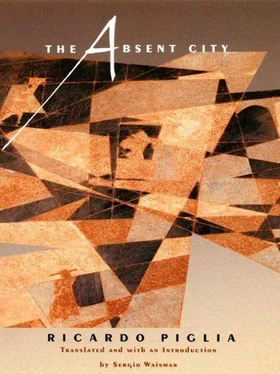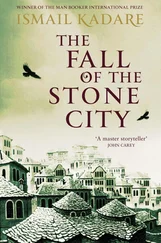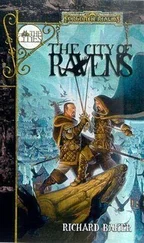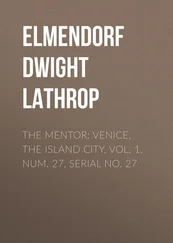No one told him that the Russian was not Russian, but Hungarian, that he was an engineer who had studied with Moholy-Nagy, that he had come to get away from the Nazis, that he had killed a man, that he had stolen the letter and the cart from a dead man. Ríos had investigated the wrong life. All the facts were true, but it was the wrong man. Ríos laughed, afterward, when he saw all the noise he had stirred up. You can’t be a shooting champion and put the bullet right where you put your eye if you don’t have the absolute certainty that you are going to hit the bull’s-eye every time. Sometimes he missed. But if he missed he would tell himself he had missed on purpose. When events had proved him wrong, and it was already too late, he simply altered the angle of his shot and concentrated on the museum and on Carola Lugo.
“This is a small town,” Ríos said. “You always see the same people going around the same places, and yet the hardest thing to understand is precisely what everyone knows. The secret is out in the light and that is why we don’t see it. It’s like target shooting. It has to do with extreme visibility.”
There was a mechanical bird in the town museum. They brought it with the railroads in 1870. It worked to anticipate storms. It would go around in the air, flying out in wider and wider circles, and then head straight toward the water. Even now, when the rain is approaching, it begins to move its wings and jump slightly up and down in the glass cabinet where it is chained up. They have come from Germany to look at it, and they claimed that it was German (that it could not be anything other than a German bird). There is a very old tradition of automatons in the Black Forest, Ríos said. They wanted to buy it, but the bird is a historical piece that belongs to the province, and it is not for sale. The chief of the station, the Englishman McKinley, had lived in the large house where it is kept. His wife abandoned him a week after they got there, and he lived alone ever since. When she saw the Argentine plains, the low weeds, the gauchos with their Japanese faces, the woman went back to Lomas de Zamora, disillusioned. It was McKinley, as strange as it may sound, who became interested in the history of the area, and started gathering mementos. He had belonged to the Royal Geographic Academy in London, and was an honorary member of the British Museum, and would occasionally send them reports about the region. He bought the bird for two hundred pesos from Paul Veterinary’s representative. It had been kept for decoration purposes in a cage between the fox terrier puppies and the house parrots. It was invented by a French engineer and used in Argentina to measure the plains when they laid out the tracks of the Ferrocarril del Sur. They would set it free and the animal would fly off, flapping its wings, and disappear into the horizon. When it returned, all they had to do was open a hinge in its chest and take out the clock with the measurements. The Englishman was crazy, he came to build a Museum in this lost little town, in the middle of everybody’s indifference. No one was interested in the past here, we all live in the present. If everything has always been the same, forever, what is the use of saving things from a time that has not changed. But McKinley left everything arranged in his will. The municipality took over the house, put a flag above the door, and sometimes, on June 13, which was the anniversary of its foundation, they took the children from the elementary school and performed a ceremony on the sidewalk in front of the building. The Lugos were appointed caretakers, and Carola grew up in that house, playing with all the replicas of the Indian tents and the manes of the embalmed horses when she was a little girl. Sometimes, when some foreign visitor would appear (which occurred every two or three years), they would take the bird out and have it fly and head out toward the rains. One afternoon Ríos took the Russian to visit the museum. The Russian went crazy over the animal. Carola Lugo opened the door for them. She was blond and small and fragile, with a harelip. She showed them the house and the galleries. A different era was represented in each room. There were skeletons and drawings. “The professor was a photographer and could also draw. He made several explorations of the region. In this field that we see over here, near Quequén, he found a cattle ranch in which the gates and the tie beams of the house were made out of whalebone. They probably found the animal on the beach, dead, and thought it would look luxurious to use the skeleton to decorate the countryside. One can just about imagine a country-man, who has never seen a whale in his entire life, go as far as the sea on his horse and find that large mass lying on the sand and think that it is a fish from Hell.” The afternoon was freezing and overcast. “Here we see a typical tent. The Indians used this kind of leather to protect themselves against the southern winds.” Finally they went through a hallway with photographs and paintings from the laying of the railroad tracks. The bird was displayed in the center room, inside a glass cabinet. It looked like a vulture and had a fierce gaze and its wings moved as if it were breathing. It was attached by a small chain. Carola opened the glass case and handed it to him. The Russian held it in his two hands, amazed at how little it weighed. Light as the air, he said, and Carola smiled. They went outside to the back patio among the trees. There was nothing but plains and the sky extending endlessly in every direction. The Russian lifted the bird and gently let it go. At first it flew low to the ground, in circles, with a heavy flapping of its wings. Then, suddenly, it faced the storm and took off. It returned after a while, flying back to the patio, moving slowly, and perched itself on Carola’s shoulder. The Russian opened its chest and started to explain the clock mechanism that made it work. From that day on the Russian began to go to the museum after he got off work at the Federal Shooting Range. He would stroll through the Indian tents and always end up in the room with the bird. Carola went with him, quietly, peacefully. One night he stayed there, and after that they began living together. He set up a small workshop and started working on a replica of the bird. One morning she was sitting by the door when she saw someone pull up in a Buick. He was looking for the Russian, who had escaped from the insane asylum. He did not resist, he let himself get taken away by the man in the brown suit. The replica of the bird was only halfdone. Now it is on display in a smaller glass cabinet. Its chest is open and the gears and the little clock wheels look like the drawings of a soul. Sometimes it opens its beak, as if it needed more air, and turns its head toward the window. What it has not found is its form, Ríos says, it is suffering from a lack of truth.
Junior traveled all night. When he got there he recognized the house as if he had seen it in a dream. The white facade, the tall entranceway, the endless succession of transparent windows. He called at the front door with the bear-claw knocker. The town was empty, the only person he saw was a girl who raised an embroidered curtain and spied out to look at him from behind a window. The old woman who opened the door was Carola Lugo. She looked fragile, and her eyes were hesitant, as if she were blind. She stood to the side, without opening the door all the way. Through the crack Junior saw the long hallway that led to the back of the house. “I have been waiting for you,” she said, “Hannah told me you’d be coming.” As he entered the thought crossed Junior’s mind that he would never be able to leave there, that he would become lost in that woman’s story. They walked down a long hallway and into the first room. The tall ceiling and the thin windows gave the house a remote feel to it. Carola gestured as a way of showing him the place, and asked him to take a seat. Junior settled into a long divan while she sat with her back to the window and to an old grandfather’s clock.
Читать дальше












